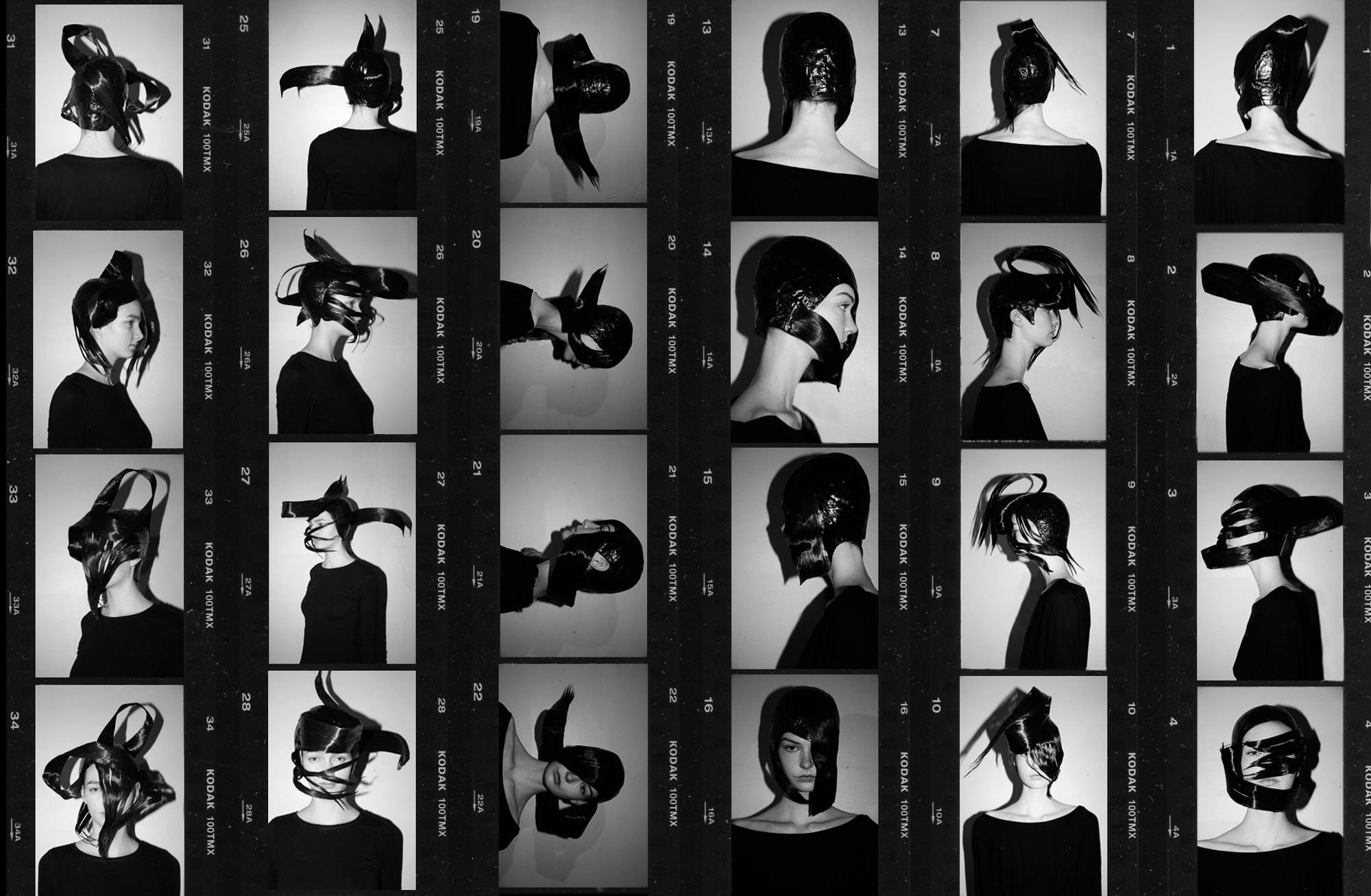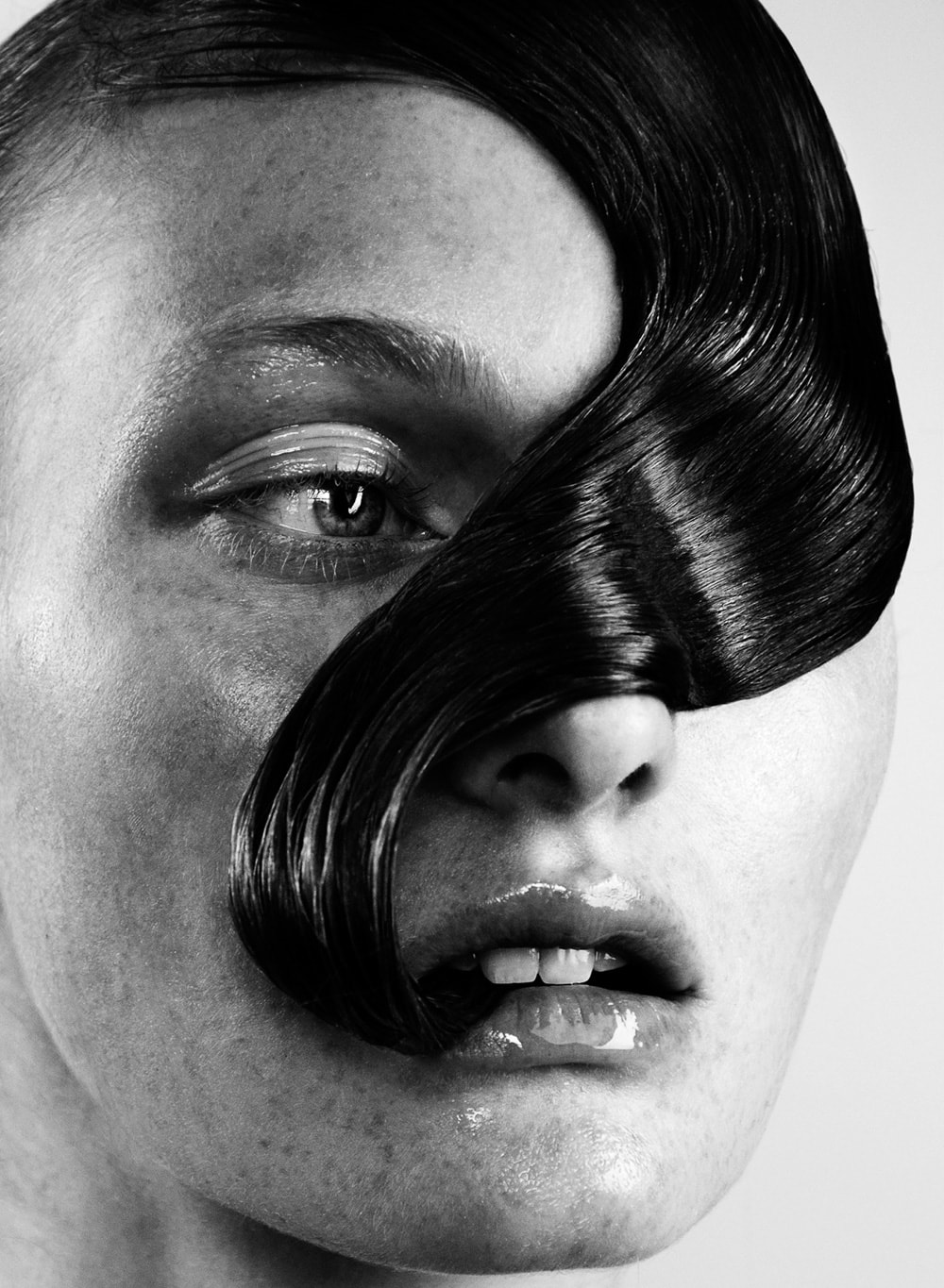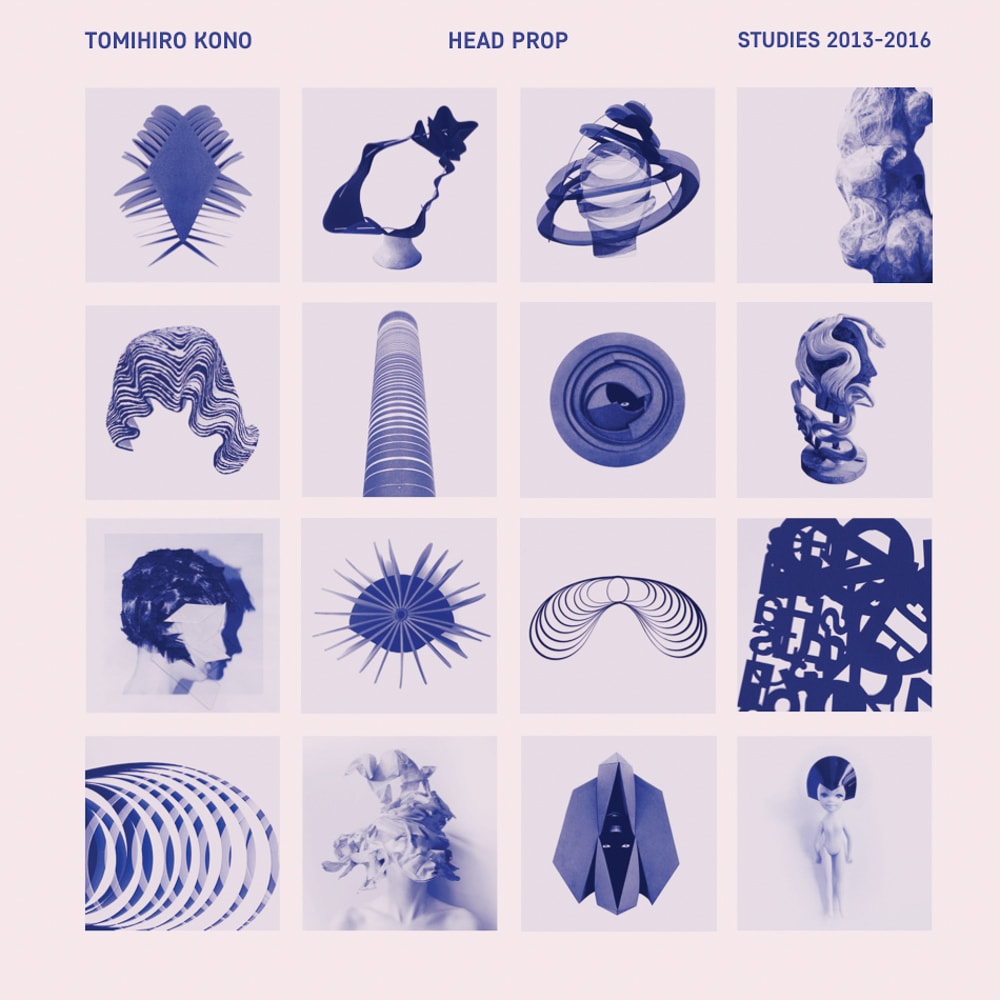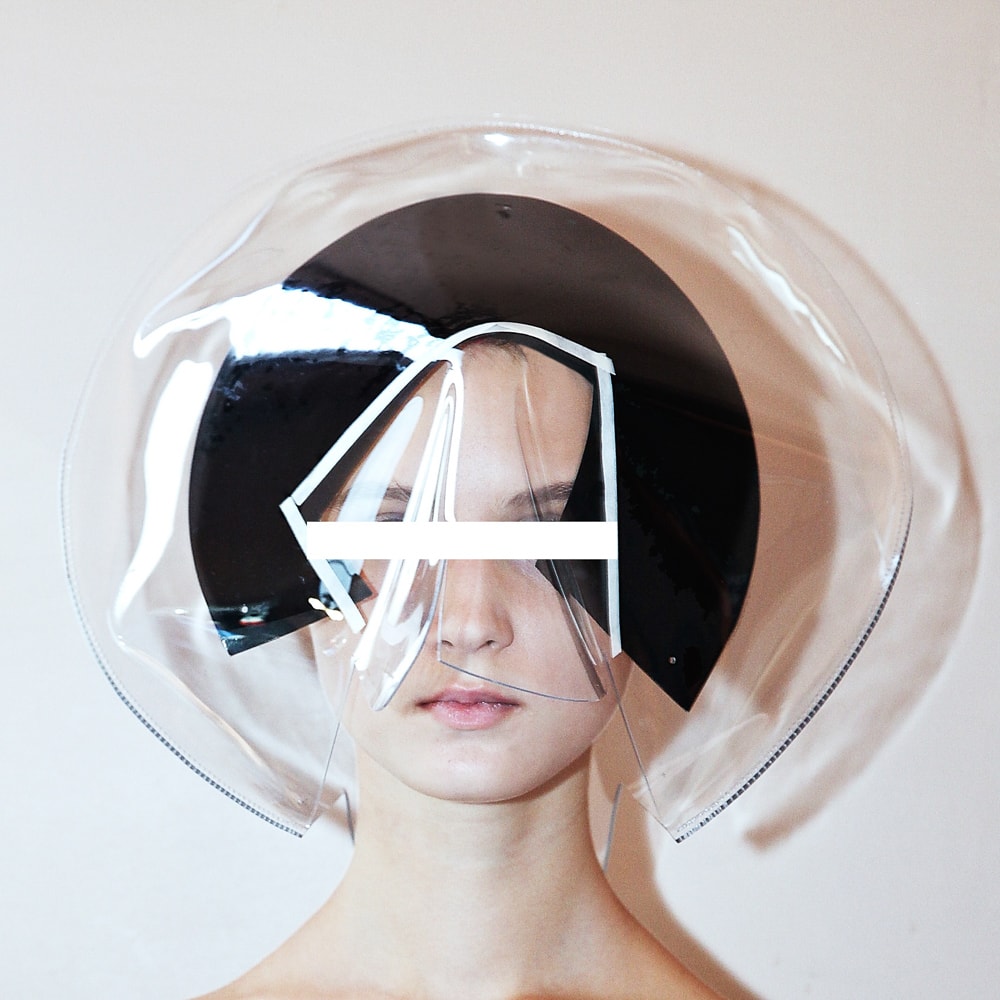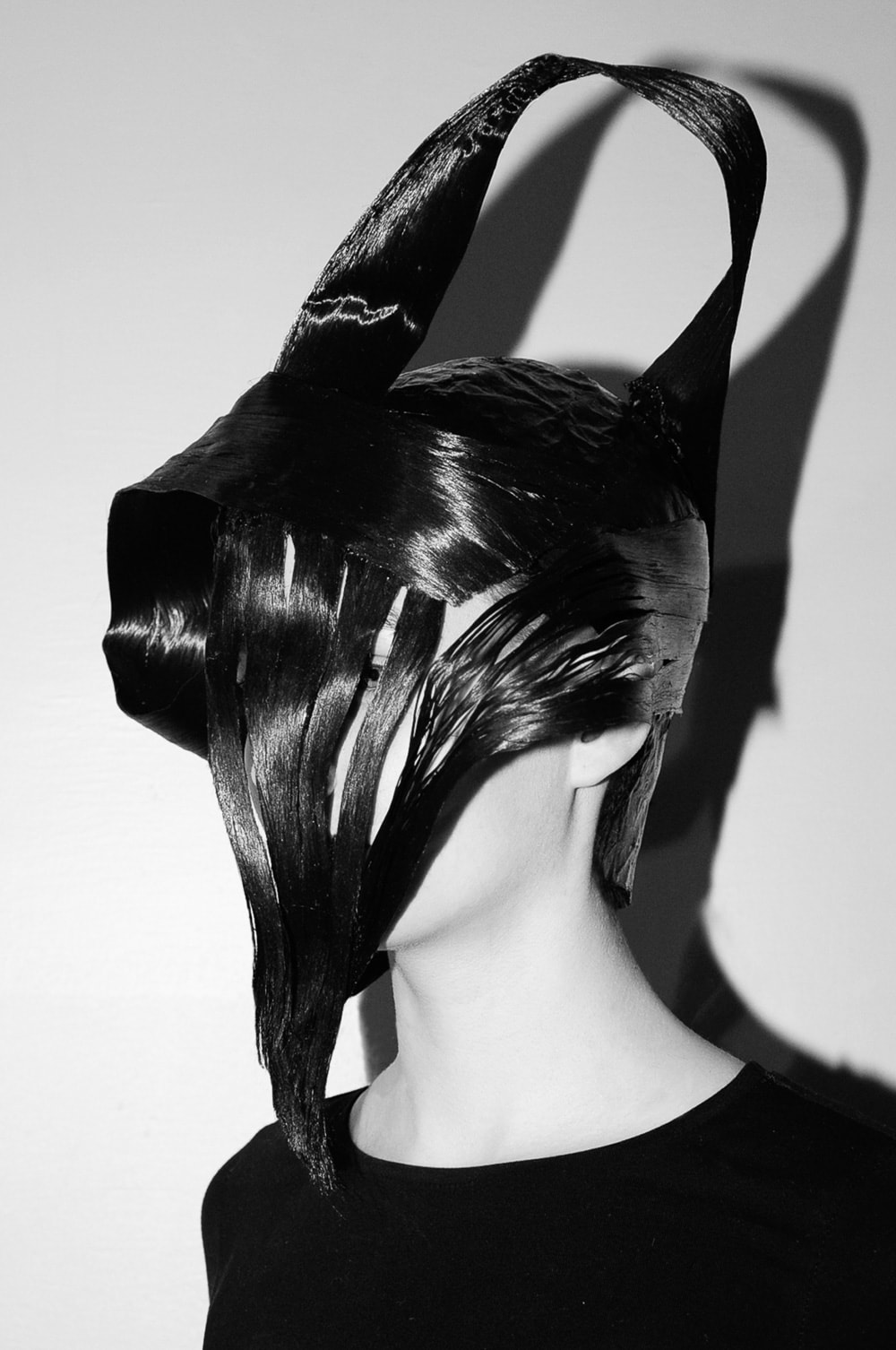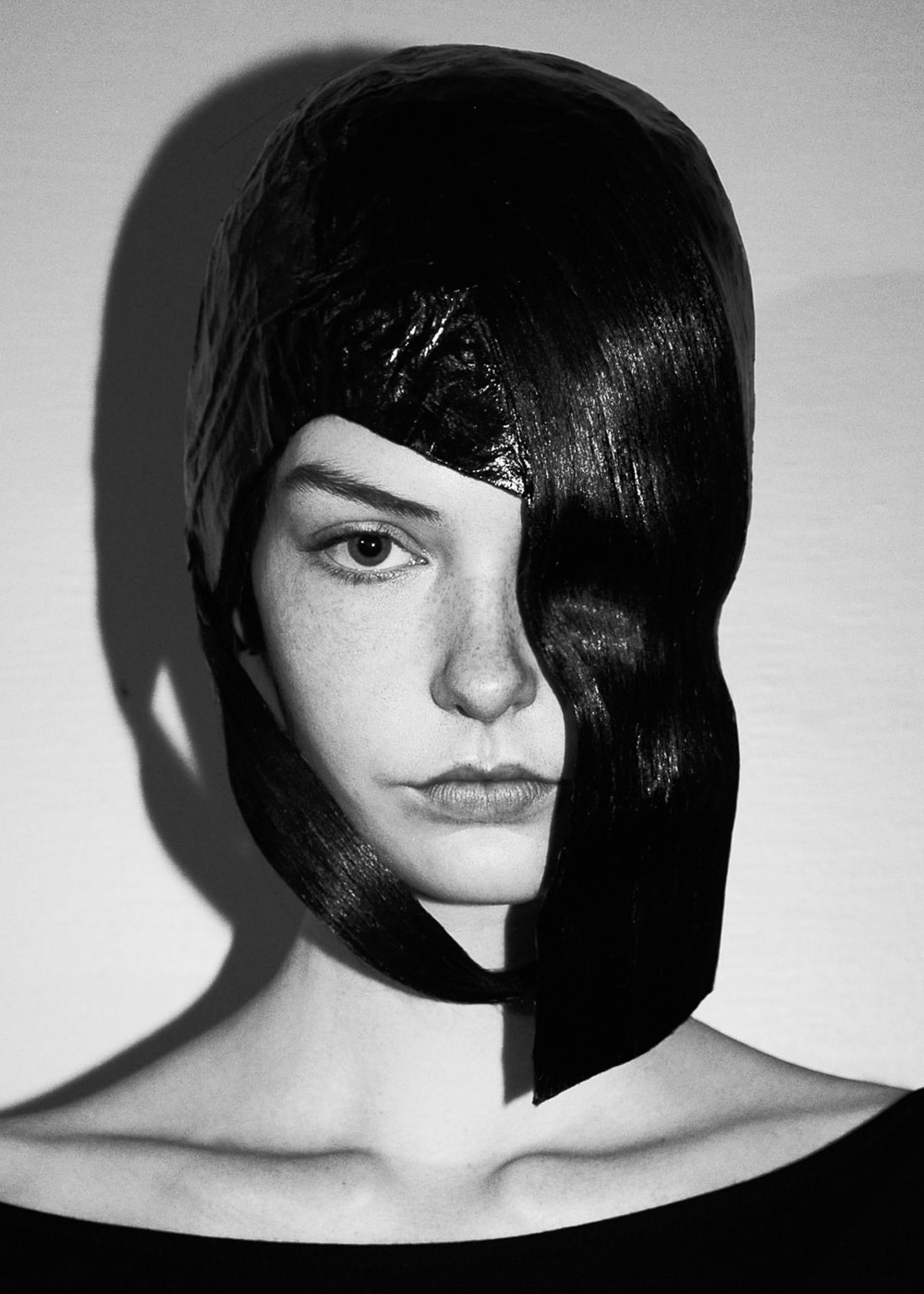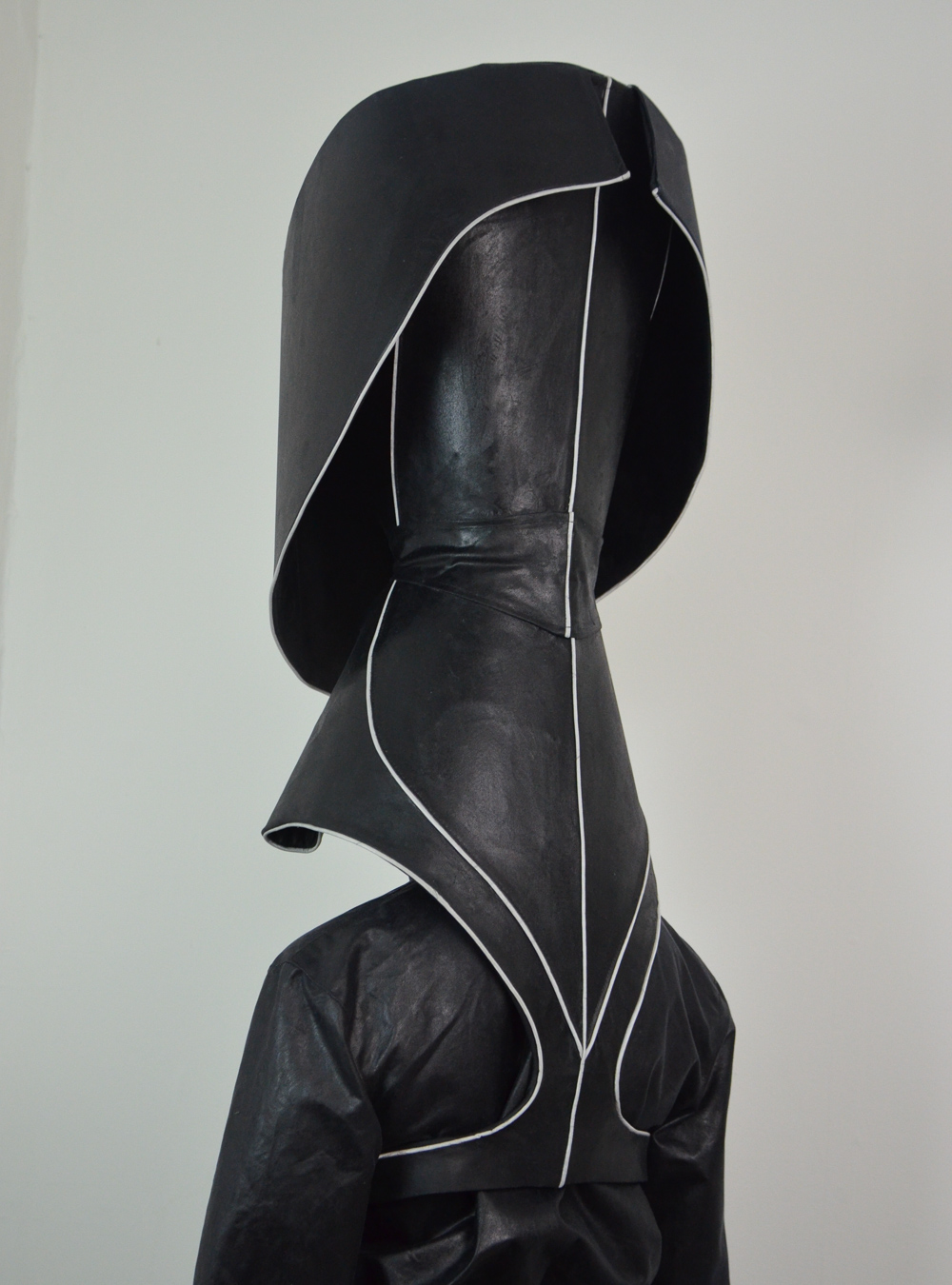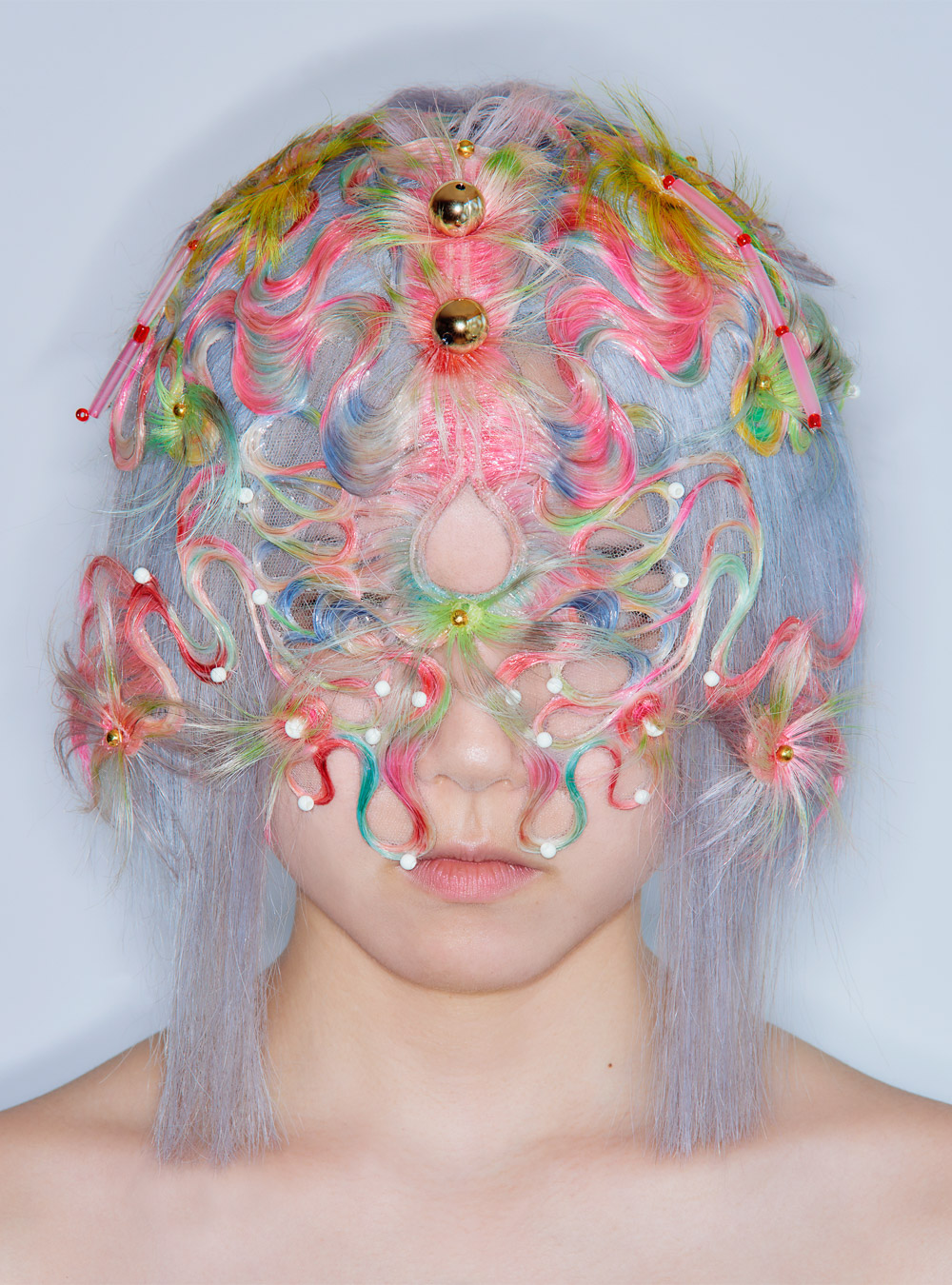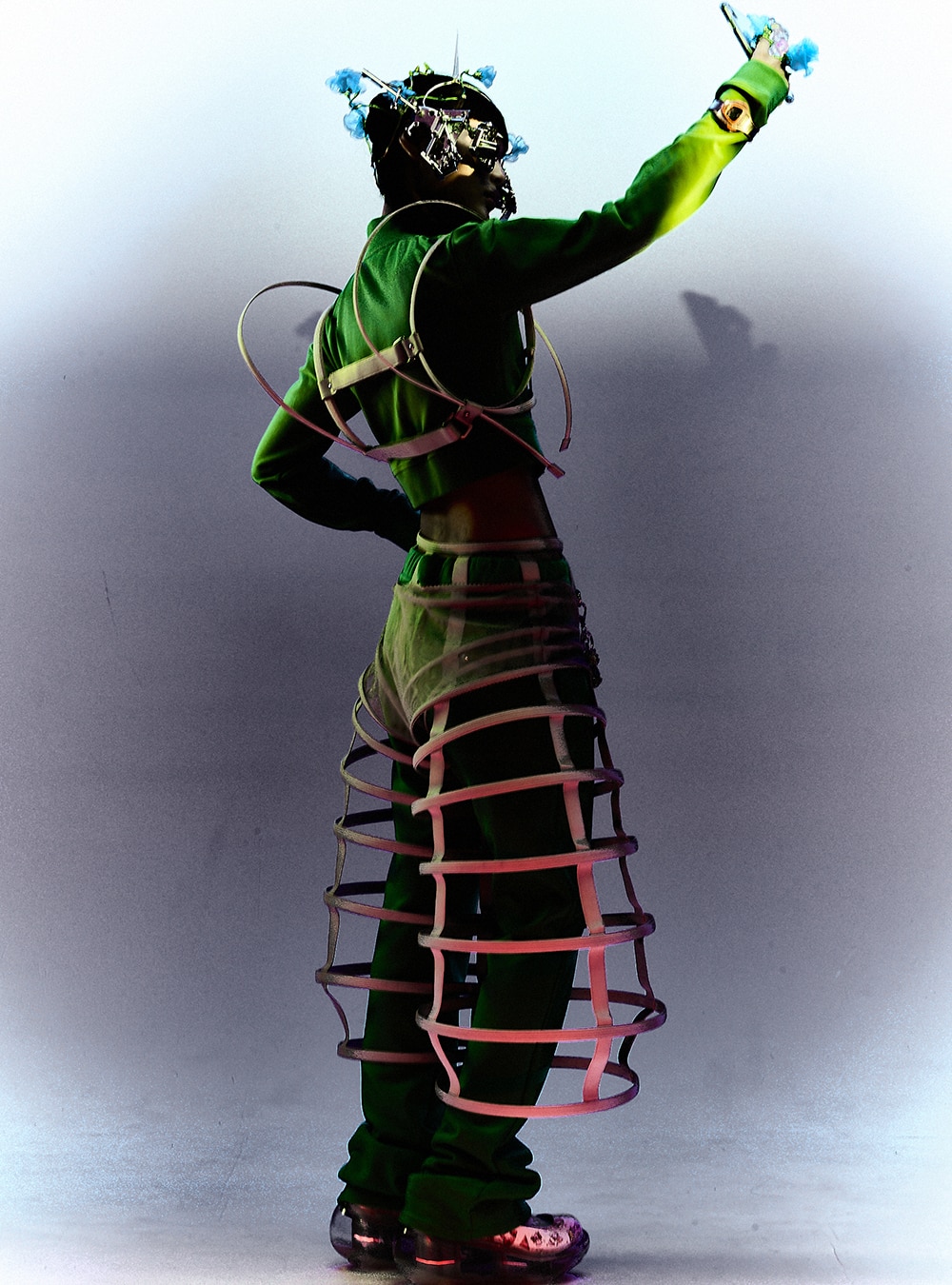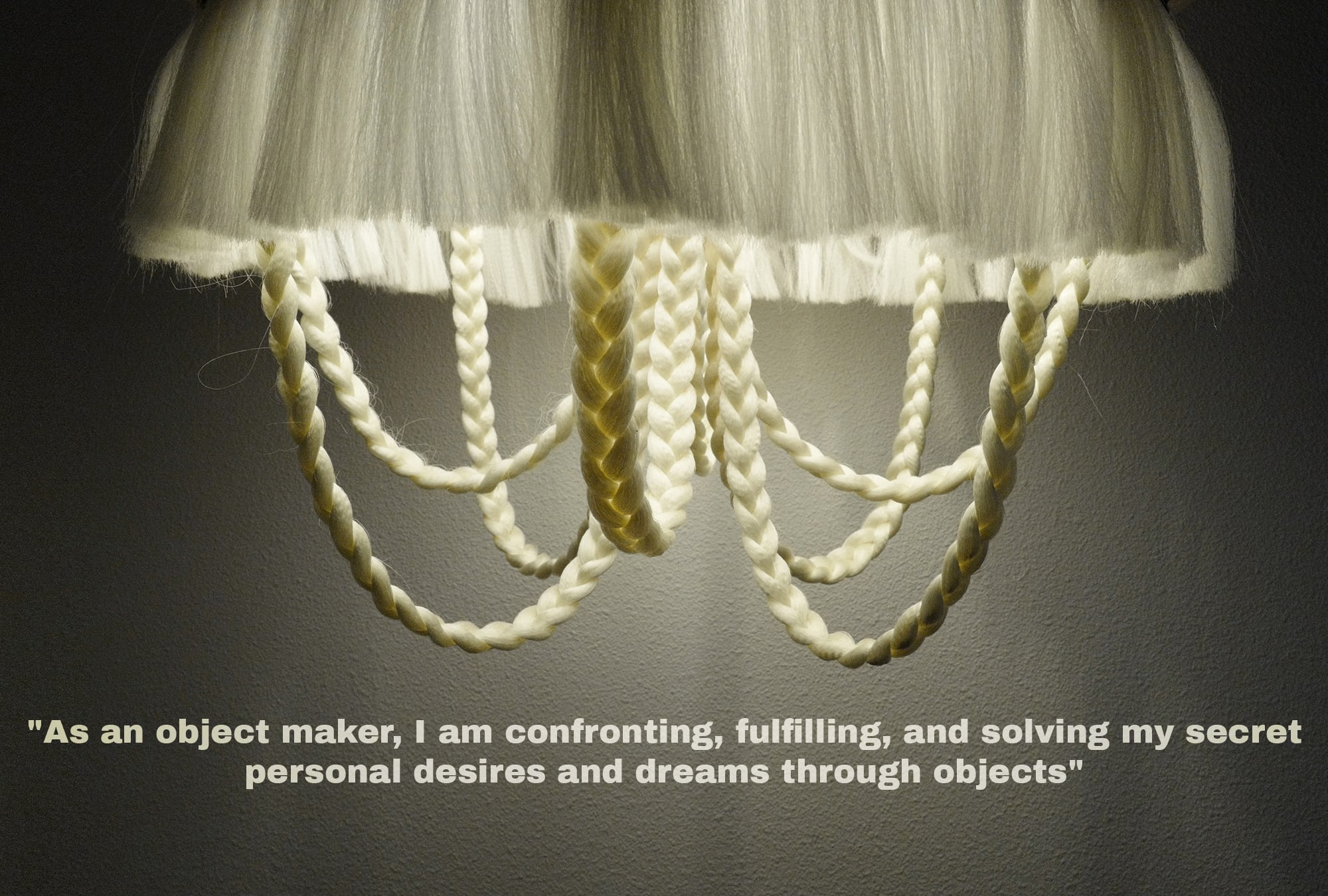PEOPLE: Hairstylist and head prop extraordinaire Tomihiro Kono discusses the development of his first book Head Prop: Studies 2013–2016
Interview: Alex Mascolo
Images: Sayaka Maruyama
Special Thanks: Tomihiro Kono
Beginning his career as a classically trained hairstylist, Tomihiro Kono’s work no longer begins and ends in the salons of Tokyo. Instead, the Japanese creative’s designs are used by designers and stylists worldwide to transform both editorial and catwalk shows. Kono frequently works on editorial shoots for titles including W Magazine, Numéro and Harper’s Bazaar, as well as designers such as Jil Sander and Derek Lam. His longstanding collaborative partnership with designer Junya Watanabe (Kono has created pieces for the shows since 2014) has made him a recognisable force within the fashion world.
Kono moved to London in 2007, where he swapped salon-based hairstyling for session work, contributing to publications including Dazed and i-D. He also began to experiment with the creation of head props, “I developed so many creative, inspiring and supportive friendships there, which helped me to develop my creative mind” he explains. “The energy, youth culture, music and fashion is so original and cool. Every collaboration I did in London was so vibrant.” After 5 years in London, Kono moved to New York, where he is based today. Here, his methods of designing head props became increasingly mathematical and methodological. Stylistically, his pieces became more graphic during this period, the materials used more diverse and experimental, with vinyl, rope, iron sand, rubber tubing and visual motion effects being incorporated into his projects.
Kono’s first book, Head Prop: Studies 2013–2016, showcases the sheer range of his creative capabilities. Released this month, the book demonstrates how his ideas are transformed into malleable 3D objects. It also represents another notable career shift for Kono as he sets up the Brooklyn based independent publisher Konomad, whilst simultaneously branching out into wig making. INFRINGE spoke to Kono about the concept behind his new book.
What inspired your move from hairdressing towards head prop artistry? I actually still consider hair styling as the main part of my job despite having made many head props. Ideally, I’d like to create a balance between them as one stimulates the other. When I moved to London in 2007 it felt really natural to start creating head props – I felt creative and saw this as a way to build my career in my own, original way. I’ve always thought that originality is extremely important when working freelance, as you want people to recognise that you can make something special and unique. Eventually people started to ask me to make exclusive pieces for shoots and to be part of exciting collaborations with artists and performers.
Does your background in hairdressing influence your approach to creating head props? Yes, definitely. The techniques used are almost inseparable. They are always related to each other. For example, I’ve made a series of 3D hairstyles inspired by the haircut diagrams I used during my hairdressing training in Tokyo. It’s essential to know how each hairstyle is structurally made so you can control the hair shape and line.
Which materials do you most enjoy working with? Which is the most challenging? Having experimented with lots of different materials I find hair the most interesting one to work with. Hair is a responsive material, easily affected by weather, humidity and change of environment, which makes it both profound and challenging. When I am on set, I try to constantly adjust the hair as the photographer shoots as even minor changes in hairstyling can transform a photograph. In my personal opinion, there’s also something relaxing about touching hair.
Your new book Head Prop: Studies 2013–2016 is comprised of diagrams, sketches and photos. Why did you decide to present the book in this way? I wanted my book to inspire as many people as possible, which is why I adopted both a graphic and educational approach inspired by Typology. I like that the book doesn’t look like a hairstylist’s work at first glance as I think this allows for the content to reach a wider audience. There was something very satisfactory about organising the images into a grid-like system as it gave the book an unemotional quality where the results are objectively recorded, like a catalogue.
What made you decide to compile this book, a retrospective from 2013-2016, now? I decided to start making the book in April last year as a personal documentation of all my experiments and the trials and errors of my creations. I had spent so much time and effort on the pieces that I wanted to keep a record for myself and the rest of the world. There is always some work that remains unseen as it has no place to go, so I wanted to make a place for them to be shown so I wouldn’t forget what I’d made. Books are my favourite medium to record and archive, I’ve always believed in analogue mediums rather than digital. I hope that upcoming creators or next generations will have a chance to dig out my book someday, just like I have done with old haircutting and styling process books.
What is your most unlikely source of inspiration? Daily life is my inspiration. It’s all around us if you want to see it.
- ANTHROPOLOGY OF HAIR
- ANTHROPOLOGY OF HAIR
- ANTHROPOLOGY OF HAIR
- ANTHROPOLOGY OF HAIR
- ANTHROPOLOGY OF HAIR
